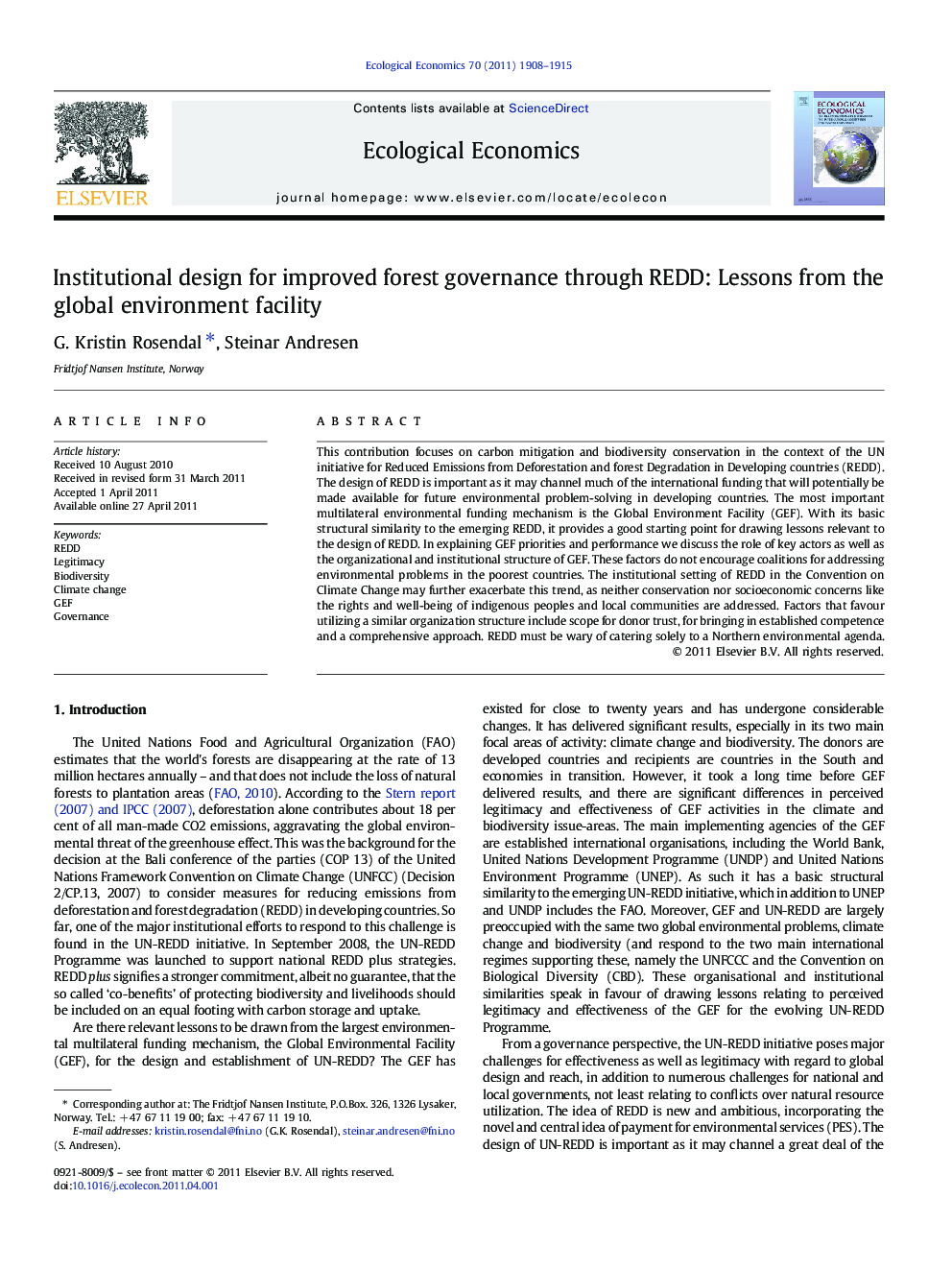| کد مقاله | کد نشریه | سال انتشار | مقاله انگلیسی | نسخه تمام متن |
|---|---|---|---|---|
| 5050557 | 1371093 | 2011 | 8 صفحه PDF | دانلود رایگان |

This contribution focuses on carbon mitigation and biodiversity conservation in the context of the UN initiative for Reduced Emissions from Deforestation and forest Degradation in Developing countries (REDD). The design of REDD is important as it may channel much of the international funding that will potentially be made available for future environmental problem-solving in developing countries. The most important multilateral environmental funding mechanism is the Global Environment Facility (GEF). With its basic structural similarity to the emerging REDD, it provides a good starting point for drawing lessons relevant to the design of REDD. In explaining GEF priorities and performance we discuss the role of key actors as well as the organizational and institutional structure of GEF. These factors do not encourage coalitions for addressing environmental problems in the poorest countries. The institutional setting of REDD in the Convention on Climate Change may further exacerbate this trend, as neither conservation nor socioeconomic concerns like the rights and well-being of indigenous peoples and local communities are addressed. Factors that favour utilizing a similar organization structure include scope for donor trust, for bringing in established competence and a comprehensive approach. REDD must be wary of catering solely to a Northern environmental agenda.
⺠The article focuses on carbon mitigation and biodiversity conservation in the context of UN REDD. ⺠It draws design lessons on effectiveness and legitimacy from the Global Environment Facility. ⺠Key actors may discourage coalitions for addressing environmental problems in the poor countries. ⺠The institutional setting may hamper conservation and socioeconomic concerns. ⺠Similar organizational design includes high scope for donor trust and a comprehensive approach.
Journal: Ecological Economics - Volume 70, Issue 11, 15 September 2011, Pages 1908-1915